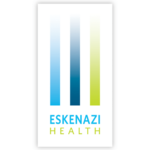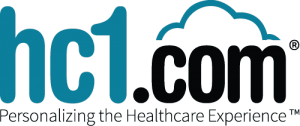Text Messaging Helps Safety Net Hospital Connect with Patients and Reduce No-Shows by 25-30 Percent
// By Jane Weber Brubaker //
 According to Pew Research, “young adults, Hispanics, renters and the poor (as defined by the U.S. Census Bureau’s poverty thresholds) are all far more likely to be cell-only.” So if you’re a safety net hospital like Eskenazi Health in Indianapolis, Indiana, it makes sense to reach out to patients via text messaging, and that’s what it did.
According to Pew Research, “young adults, Hispanics, renters and the poor (as defined by the U.S. Census Bureau’s poverty thresholds) are all far more likely to be cell-only.” So if you’re a safety net hospital like Eskenazi Health in Indianapolis, Indiana, it makes sense to reach out to patients via text messaging, and that’s what it did.
Here we’ll share how Eskenazi Health, working with HC1’s healthcare relationship management platform, significantly reduced no-shows for its multispecialty clinics, and increased physician, staff, and patient satisfaction.
No-Shows as High as 40 Percent
Eskenazi Health, one of the largest safety net health systems in the U.S., provides care to nearly a million outpatient visitors a year. Some of its 38 multispecialty clinics were experiencing no-show rates for office visits of up to 40 percent.

Parveen Chand, Chief Operating Officer of Eskenazi Health
“One of our clinics, which you would think would have a high show rate for patients would be our cancer or infusion clinic,” says Parveen Chand, Chief Operating Officer of Eskenazi Health. “And even in that model, we had a no-show rate of appointments as high as 10-12 percent. It’s an issue for any practice, let alone a multispecialty practice.”
Relative to other hospitals in the Indianapolis market, Eskenazi’s no-show rates were substantially higher, but compared to other safety net hospitals across the country, the rates were closer to the norm, according to Chand.
Making Up the Difference by Overbooking
To compensate for patients who didn’t show up, the clinics overbooked. Chand gives an example of an orthopedic clinic that routinely booked 110 appointments a day, hoping 65 patients would show. Physicians and staff were unable to prepare adequately, not knowing which 65 patients would come in on any given day.
Contributing to the problem, patients were difficult to reach by phone because the system frequently lacked up-to-date contact information, or patients did not respond to appointment reminder calls.
 Eskenazi Health began brainstorming with Indianapolis neighbor HC1.com to see if HC1’s Healthcare Relationship Management platform could help to alleviate the problem. Part of the appeal of working with HC1 was the company’s experience dealing with sensitive consumer health information. “They have a number of clients that are lab providers, and they have lots of sensitive information, lots of real-time information,” says Chand.
Eskenazi Health began brainstorming with Indianapolis neighbor HC1.com to see if HC1’s Healthcare Relationship Management platform could help to alleviate the problem. Part of the appeal of working with HC1 was the company’s experience dealing with sensitive consumer health information. “They have a number of clients that are lab providers, and they have lots of sensitive information, lots of real-time information,” says Chand.
Two-Pronged Campaign
HC1 worked with Eskenazi’s clinic administrator and IT department for three and a half months to iron out the details, and in February, Eskenazi Health launched a two-pronged campaign to decrease no-show rates. First, a “know your numbers” campaign helped raise patient as well as staff awareness of the need for accurate contact information. “We made a concerted effort to make sure we had people’s most recent phone number during our registration process, during any interaction that we have with consumers,” says Chand.
The second piece was using HC1’s platform to send out a series of text messages to remind patients about upcoming appointments. The first text reminder went out a week before the appointment. Patients received a second alert two days prior to the office visit, and a final reminder the day before their appointment.
Chand notes that texting in a business-to-consumer context is not revolutionary, but it was for Eskenazi Health. “The reality is, for us, we are behind the times,” says Chand. “When I was living in the St. Louis market, my dentist did that, and that was 7 or 8 years ago. In other industries like banking and travel, this is pretty much the norm.”
Fewer Bookings, More Patients Showing Up
The program has been operational for six months, and the results have been extremely positive. No-shows have decreased by 25 to 30 percent on average. Using the orthopedic example above, Chand reports that the clinic had been booking 110 appointments a day to get 65 patients to show up, and now they are booking 80 appointments and 70-75 patients come in, a reduction from 45 no-shows a day to five or 10.
The text reminder program has been expanded to other health system appointments, including physical therapy, occupational therapy, and medical spa appointments. The medical spa is part of the burn center.
The success of the switch to text-based messaging may be partially related to cellular plans this population is likely to have, with unlimited text messages, but voice minutes that could be capped at 250 or 500 per month. Chand guesses that when patients see a health system in caller I.D. they might think they’re getting a call about an outstanding bill, or worse, bad news about a medical condition. With text messaging reminders, they react. They can cancel an appointment, or make the necessary arrangements so they can keep the appointment.
Better Continuity of Care, Improved Satisfaction
From a physician standpoint, Chand has observed that there is greater continuity of care, and staff morale has improved. “We’ve been able to see from our employees a little bit higher satisfaction because they can now do the prep work and anticipate that Jane Doe is really going to show up,” says Chand. Patients have also responded positively. “I have heard anecdotally that patients say, ‘I got the message and if it wasn’t for that message I would have forgotten about my appointment,’ or ‘I would not have made arrangements for X, Y, or Z so I could be at my appointment,’” says Chand.
Social Determinants of Health
The hope is that historical data on no-shows gathered by the HC1 platform will help Eskenazi Health understand the causes. “One of the best things about the platform in aggregate has been that if you’re patient Jane Doe, we know how many appointments you missed,” says Chand. “What this platform allows us to do is delve into why Jane Doe missed her appointments. Are mornings bad for her because of transportation issues? Are Tuesdays bad?”
Expanding the Texting Program
Since March, Eskenazi Health has been using HC1’s platform to facilitate enrollments in Indiana’s Medicaid expansion, Healthy Indiana Plan 2.0 (HIP 2.0). “We are just starting to see some results,” says Chand.
Chand envisions using the tool to help employers better engage employees, and within the context of population health, to better manage chronic diseases like diabetes. Although HC1’s platform is a cloud-based CRM platform, which is typically the domain of the marketing department, Eskenazi’s current initiatives have not involved marketing, but may in the future to promote health fairs and health screenings.
Why Texting Works
90% of Americans own a cell phone
81% of adult cell phone owners send or receive text
43% of U.S. adults live in a household with a cellphone and no landline phone
Source: Pew Research Center
Jane Weber Brubaker is the Editor of eHealthcare Strategy & Trends.

